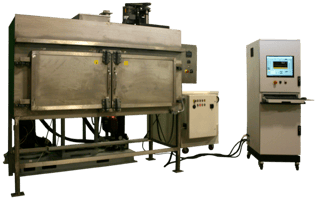The proper testing of each component during development is especially crucial for in-flight critical applications because a failure of even the smallest component can have catastrophic results. Additionally, applications in these types of industries often have complex hydraulic components, use exotic fluids, or need to have fail-safe functionality in high-pressure environments, which creates even more complicated test scenarios.

Oftentimes, companies perform these mission-critical tests using an independent firm or with manually intensive methods in their test labs. However, in the aerospace industry, where it is critical to monitor and track all of the test data for each component used in a system throughout the entire development process using very specific and regulated methods, it would be better to use a more automated in-house solution that can ensure all tests are performed correctly and all data is properly recorded.
In our new white paper, called "Acceptance Testing Procedures for Aerospace Hydraulic Components," we discuss the options available to manufacturers for performing these types of tests. We also provide insight on which acceptance testing procedure (ATPs), including manual, semi-automatic, and fully automatic, may be the best choice for your organization.



